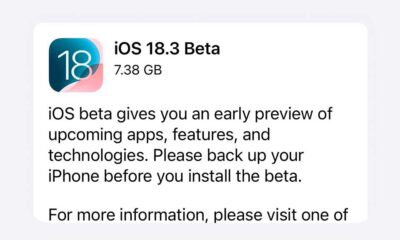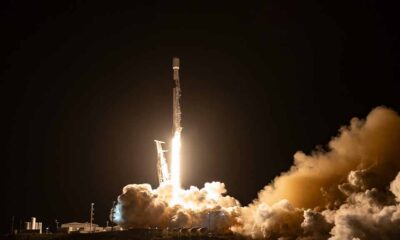SpaceX
SpaceX completes static fire for Flight 7 Starship

SpaceX has completed the static fire for Flight 7 Starship to prepare the integrated flight for the upcoming launch test and verify new upgrades.
The static fire test verifies functionalities primarily focusing on engines. The test team ignites the engines and keeps them firing for a couple of seconds to simulate a real launch without leaving the test pad.
Starship is a 121-meter-tall integrated launch vehicle consisting of two stages. The second stage is designed to lead the mission into orbit.
The ship is 50 meters tall and 9 meters wide. It has a payload capacity of 100-150 tonnes of cargo, which could be scientific instruments, satellites, or human passengers.
It equips six raptor engines with 1,200 tons of propellant capacity and generates 1,500 tf of vacuum thrust in space.

SpaceX Starship Static Fire at Starbase, Texas (Credit – SpaceX)
The ship is under testing to become eligible for real launches and SpaceX continues to launch new test flights to verify new upgrades over the previous mission.
To achieve reusability, Starship must endure the high heat without any component damage. However, descent heat remains a major challenge.
After re-entry, the vehicle faces immense atmospheric pressure, which generates high heat. To get the it through this high-heat phase, SpaceX has designed the shield tiles, installed on the belly of the upper stage.
The rocket falls horizontally with its tiles facing the Earth so that the inner ship layer doesn’t come in direct contact with the massive heat.
Static fire of Flight 7 Starship pic.twitter.com/3Xa2bYFkdp
— SpaceX (@SpaceX) December 15, 2024
During Flight 6, SpaceX successfully landed the ship into the Indian Ocean with a flip maneuver. The company plans to do this on a launch tower but everything needs to go right with Flight 7 to attempt this maneuver with a future test mission.
A previous report indicates that SpaceX could launch the Starship Flight 7 somewhere in mid-January 2025. The company won’t have any problem in getting a new FAA license as it is keeping the mission milestones similar to previous tests.












